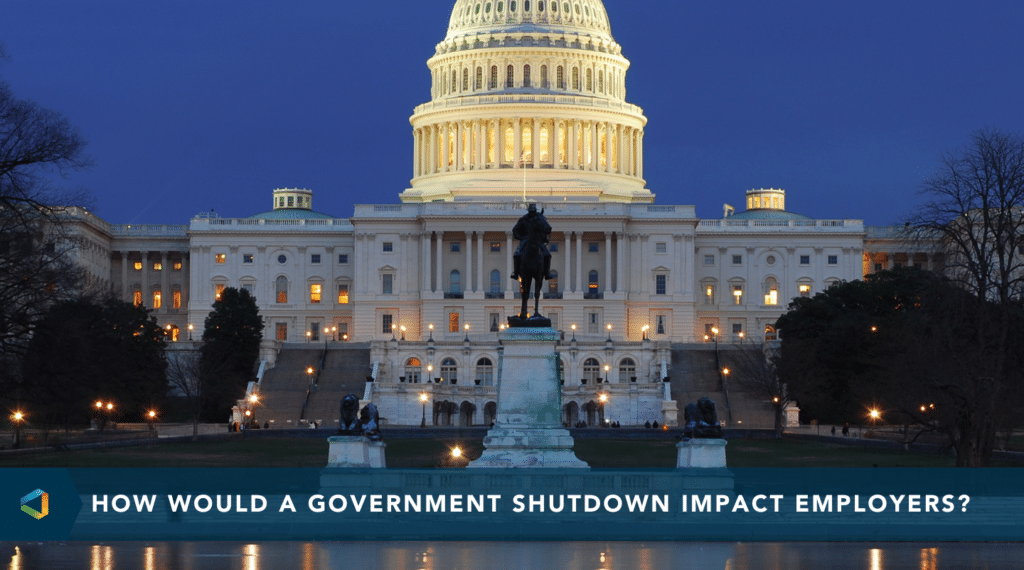Compliance Confidence
COVID-19 Furloughs, Layoffs & Leaves: How It Affects Your Employee’s Health Benefits
COVID-19 Furloughs, Layoffs & Leaves: How It Affects Your Employee’s Health Benefits
As COVID-19 continues to test our economy, many employers are being forced to make the difficult decision to layoff employees and institute furloughs or other temporary leaves of absence.
A unique challenge with this public health emergency is how these layoffs and furloughs impact employee’s benefits, which are essential to combating the spread of the virus. Several existing employee benefits laws and regulations guide the decision-making process for offering benefits during a layoff, furlough or other leave of absence.
What is the difference between a layoff, furlough, and other leaves of absence?
- Furlough: a temporary unpaid leave from work where the employee remains employed
- Layoff: an employer-initiated termination of employment that may be temporary or permanent
- FMLA: a federally mandated unpaid leave for family and medical related care
- Other Leave: non-legally mandated leave of absence that may be paid or unpaid
When does the law require that the employer continue to offer coverage to its employees?
| Law/Regulation | Furlough | Layoff | Other Leave of Absence |
|---|---|---|---|
| Affordable Care Act (ACA): Under the ACA, an applicable large employer (with 50+ FT and FTE employees) must offer health coverage to substantially all of its fulltime employees. Full-time is defined as an employee averaging 30 or more hours per week or 130 hours per month. The Affordable Care Act (ACA) provides applicable large employers (ALEs) with two options for determining an employee’s status as full-time or part-time.
Under the monthly measurement method, an applicable large employer determines each employee’s status as a full-time employee by counting the employee’s hours of service for each calendar month. Under the look-back measurement method, an applicable large employer determines each employee’s full-time employee status by looking back at a measurement period. Key periods under this method include:
|
Monthly Method: Since eligibility is determined month to month, the employee becomes ineligible for active health benefits when he/she ceases to work the minimum hours requirement. However, hours paid or entitled to payment, even if not actually worked, count towards eligibility.
*COBRA rules may apply. |
The ACA only requires an ALE to offer coverage to its full-time employees. Upon layoff, the employee is no longer employed by the ALE, so there is no obligation to continue offering active coverage.
*COBRA rules may apply. |
Monthly Method: Since eligibility is determined month to month, the employee becomes ineligible for active health benefits when he/she ceases to work the minimum hours requirement, unless on a paid leave or protected leave such as FMLA or USERRA.
*COBRA rules may apply. |
| Look-Back Method: If the employee is in a stability period as a full-time employee, the ALE must continue to offer health coverage to the employee as it would for similarly situated active employees. | Look-Back Method: If the employee is in a stability period as a full-time employee, the ALE must continue to offer health coverage to the employee as it would for similarly situated active employees. | ||
| COBRA: Employers that employed 20 or more employees on more than 50% of its typical business days during the previous calendar year are subject to COBRA and must offer continuation coverage when certain qualifying events occur that cause an individual to lose health coverage.
To be eligible for COBRA continuation coverage, an individual must be a qualified beneficiary currently enrolled in coverage that experiences one of the following qualifying event:
State continuation requirements may apply. |
Non-ALE: Due to a reduction in hours, a furloughed employee is eligible for COBRA. | Due to termination of employment, a laid off employee is eligible for COBRA. | Due to a reduction in hours, an employee on a leave of absence is eligible for COBRA, unless paid leave hours are sufficient to maintain minimum hours required under the ACA. |
| ALE: Due to a reduction in hours, a furloughed employee under the monthly measurement method is eligible for COBRA, unless paid furlough hours are sufficient to maintain minimum hours required under the ACA. | |||
Family and Medical Leave Act (FMLA): FMLA entitles eligible employees of employers with 50 or more employees in 20 or more work weeks in the current or preceding calendar year to take up to 12 work weeks of leave in a 12-month period for the following reasons:
|
Employers are required to continue offering coverage to employees while on a FMLA. | Terminated employees are not eligible for FMLA. | FMLA’s requirement to continue offering coverage during the leave does not extend to other non-FMLA or non-protected leave. |
Section 125/Cafeteria Plan: Generally, the Section 125 Cafeteria plan elections are irrevocable except for specific instances in which an employee can make a mid-year election change. The following are permissible mid-year election change events, if they are included in the employer’s cafeteria plan document:
The Consistency Rule, which provides that an election change may be permitted only if it is consistent with the change in status, is an important factor in determining whether a mid-year election change is permissible. |
Due to a reduction in hours, furloughed employees are eligible to make mid-year election changes that are consistent with the reduction in hours. | Terminated employees/non-employees are not eligible to participate in the Section 125 plan. | Due to a reduction in hours, furloughed employees are eligible to make mid-year election changes that are consistent with the reduction in hours. |
Who covers the cost of the coverage?
Employees that maintain active coverage due to working the minimum hours requirement or having full-time status in a stability period, maintain the employer’s usual contribution strategy. If the employee enrolls in COBRA coverage, the employee pays up to 102% of the cost of coverage. Employers may choose to subsidize the cost of COBRA coverage but should do so consistently.
Under FMLA, the employer has five options for premium payment during the leave: 1) payment due at the same time as it would be made if by payroll deduction; 2) payment due on the same schedule as payments under COBRA; 3) payment prepaid under the cafeteria plan at the employee’s option; 4) follow employer’s existing rules for leave without pay; and 5) another system voluntarily agreed to by the employer and employee. For all other non-regulated leaves of absence, the employer’s plan documents should guide decision-making.
When are employees who were furloughed during their waiting period eligible for coverage?
Generally, the employee is eligible for coverage when he or she satisfies eligibility by working the required minimum number of hours per week for the duration of the waiting period. However, whether the employee receives credit for the furlough period of the waiting period depends of the terms of the employer’s plan document and any actively-at-work provisions that apply. The HIPAA nondiscrimination rule states that an employer cannot, “refuse to provide benefits because an individual is not actively at work on the day that individual would become eligible for benefits.” If the actively-at-work clause denies entry into the plan because the employee is not actively at work due to a health factor on the day he or she would otherwise enter the plan, the clause is prohibited under HIPAA.
Upon return to work from a break-in-service of less than 13 weeks, an employer is prohibited from reapplying a waiting period to an employee that has already satisfied the waiting period. Likewise, with a break-in-service of less than 13 weeks, an employer is prohibited from restarting the look-back process from the beginning. If an employee was in a waiting period or measurement period when the furlough occurred, the employee will generally resume that process at the same stage as before the break-in-service. For breaks-in-service of 13 weeks or longer, the employer is permitted treat the employee as a new hire. NOTE: The ACA Rule of Parity may be an alternative to the 13-week rehire rule. Employers have the option to be more generous than the ACA’s 13-week break-in-service rule, but must ensure their plan documents are updated accordingly and the insurance carrier will permit reenrollment.
What if an employer is not required to continue coverage but wants to continue it during a furlough, layoff, or other leave of absence, or otherwise be more generous?
ERISA plans have a fiduciary duty to adhere to the terms of its plan documents. To offer coverage to employees who do not meet the plan’s eligibility requirements, the employer must amend its plan documents to add eligibility for the otherwise ineligible employees. Otherwise, unless a government agency has issued enforcement relief or guidance, the employer may violate its ERISA fiduciary duty to adhere to the plan documents. In drafting its amendment, employers should be specific regarding which changes it is making – for example, does the exception apply to medical only, or also dental, vision, and other benefits?
If an employer chooses to make exceptions for otherwise ineligible individuals, such as waiving the waiting period or continuing coverage without meeting the minimum hour requirement, the employer should do so consistently among similarly situated employees as not to violate the various nondiscrimination rules. Additionally, employers should be mindful of whether the carrier will cover these additional employee’s that would otherwise be ineligible.
When employees return to work, how will furloughs, layoffs, and other breaks-in-service impact benefits eligibility?
| Law/Regulation | Furlough | Layoff | Other Leave of Absence |
|---|---|---|---|
| Affordable Care Act (ACA): Under the ACA, an applicable large employer (with 50+ FT and FTE employees) must offer health coverage to substantially all of its fulltime employees. Full-time is defined as an employee averaging 30 or more hours per week or 130 hours per month. The Affordable Care Act (ACA) provides applicable large employers (ALEs) with two options for determining an employee’s status as full-time or part-time.
Under the monthly measurement method, an applicable large employer determines each employee’s status as a full-time employee by counting the employee’s hours of service for each calendar month. Under the look-back measurement method, an applicable large employer determines each employee’s full-time employee status by looking back at a measurement period. Key periods under this method include:
|
For return before 13 weeks Monthly Method: Since eligibility is determined month to month, the employee becomes eligible for active health benefits when he/she resumes working the minimum hours requirement. |
For return before 13 weeks
Monthly Method: Since eligibility is determined month to month, the employee becomes eligible for active health benefits when he/she resumes working the minimum hours requirement. |
For return before 13 weeks
Monthly Method: Since eligibility is determined month to month, the employee becomes eligible for active health benefits when he/she resumes working the minimum hours requirement. |
| Look-Back Method: If the employee is in a stability period as a full-time employee, the ALE must continue to offer health coverage to the employee as it would for similarly situated active employees. If the employee is in a measurement or administrative period, the employee resumes at that stage of the process with 0 hours credited during the break furlough. |
Look-Back Method: If the employee is in a stability period as a full-time employee, the ALE must continue to offer health coverage to the employee as it would for similarly situated active employees. If the employee is in a measurement or administrative period, the employee resumes at that stage of the process with 0 hours credited during the break furlough. |
Look-Back Method: If the employee is in a stability period as a full-time employee, the ALE must continue to offer health coverage to the employee as it would for similarly situated active employees. If the employee is in a measurement or administrative period, the employee resumes at that stage of the process with 0 hours credited during the break furlough. Protected leaves, such as FMLA and USERRA, cannot be counted against the employee as 0 hours. |
|
Family and Medical Leave Act (FMLA): FMLA entitles eligible employees of employers with 50 or more employees in 20 or more work weeks in the current or preceding calendar year to take up to 12 work weeks of leave in a 12-month period for the following reasons:
|
Employers are required to continue offering coverage to employees while on a FMLA. Upon return from FMLA, an employee may be permitted to make an election change. | Terminated employees are not eligible for FMLA. | FMLA’s requirement to continue offering coverage during the leave does not extend to other non-FMLA or non-protected leave. |
Section 125/Cafeteria Plan: Generally, the Section 125 Cafeteria plan elections are irrevocable except for specific instances in which an employee can make a mid-year election change. The following are permissible mid-year election change events, if they are included in the employer’s cafeteria plan document:
The Consistency Rule, which provides that an election change may be permitted only if it is consistent with the change in status, is an important factor in determining whether a mid-year election change is permissible.. |
Due to a change in employment status, returning furloughed employees are eligible to make mid-year election changes that are consistent with the change in employment status. | Due to a change in employment status, returning laid off employees are eligible to make mid-year election changes that are consistent with the change in employment status. | Due to a change in employment status, returning employees may be eligible to make mid-year election changes that are consistent with the change in employment status. |
For more on this topic, view the COVID-19 Employer Advisory Session: Furloughs, Layoffs & Leaves: How It Affects Your Employee’s Health Benefits.
For more information on evolving compliance regulations in the wake of the COVID-19 pandemic, visit our OneDigital Coronavirus Advisory Hub, or reach out to your local OneDigital advisory team.
Share
Related News & Updates

Article
Unforeseen Consequences of Tech Layoffs
3.14.2023



